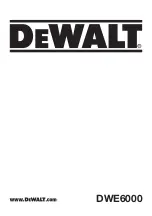
Operating
29
Engl
is
h
4.5.2
Pre-coating panels
This process is used to coat boards (substrates) with a pressure sensitive mounting film onto which
images can be mounted. This process can also be used to create a carrier board. In this case a film
with a non-stick surface is used.
Note:
The mounting film is usually provided with one release liner. Place the film in the upper
section and web it as if it has no release liner (over the splitter bar).
1.
Place the roll of mounting film on the shaft of the upper unwind position.
2.
Set the nip to correspond to the thickness of the panels to be processed.
3.
Web the film using a leader panel of the same material, thickness and width.
4.
Set the pressure while feeding the leader panel.
5.
Before the end of the leader panel enters the nip, butt up the panel to be pre-coated.
When more panels have to be pre-coated feed them in continuously without gap.
At the end, use a leader panel again to finish. This prevents the adhesive from touching the
bottom roller.
6.
End with a leader panel and feed this board until the previous panel is out of the nip.
CAUTION:
Do not cut film close to or on the rollers. This will damage the silicone coating of the
rollers and will void the warranty.
7.
Cut this panel free using a blade cutter.
8.
Back-up the leader panel using the reverse.
9.
Cut the film using a safety blade cutter.
After removing the release liner from the pressure sensitive mounting film, the board has an
adhesive coating ready to mount an image. See section 4.5.1 for mounting images.
4.5.3
Over-lamination
After an image is mounted to a panel, a protective laminate can be applied.
This process is the same as pre-coating a board (section 4.5.2).
The over-laminate can be a pressure sensitive adhesive with or without release liner.
4.5.4
Single-sided lamination
Images can be laminated single-sided with or without using carrier (or release) boards.
This laminate can be a pressure sensitive adhesive with or without release liner.
Disadvantage of the single sided lamination process is the adhesive residue that can stay behind on
the rollers where there is no image.
To avoid this, carrier boards or release liner can be used. Or the image must be wider than the
laminate and pieces of scrap material must be used to begin and end with.
4.5.4.1
Using carrier boards
Web the upper section of the machine as described above (section 4.4.1).
Put the image on a carrier board with the image side up and follow the steps for pre-coating a
board (section 4.5.2).
Содержание 64614A
Страница 1: ...62 54Base Mounter and Laminator User Manual A Version Models Rev B October 2017...
Страница 36: ......
Страница 37: ...Glossary 37 English...





























